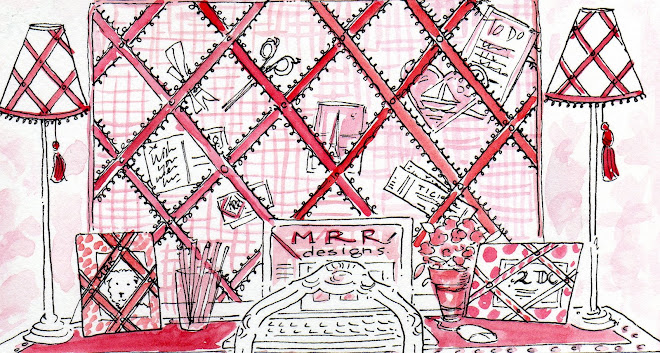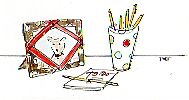
For anyone interested in American Decorative Arts, especially furniture,
you must visit Yale University's Furniture Study.
It is a fabulous resource.

"Furniture Study is a working library of approximately
one thousand examples of furniture and wooden objects
- American made and made for the American market -
ranging in date from the seventeenth to the twenty-first centuries."
On Fridays the Furniture Study is open to the public.
Soon after your arrival at the Gallery,
you will walk outside to Chapel Street,
then into the depths of a non-descript building on York Street.
It was all quite exciting...as we did not know what to expect.
In the temperature controlled basement the furniture was lined up on
platforms in an orderly fashion: arranged in chronological order in groups of
chests, tables, chairs, desks, clocks, sideboards, wood turnings,
fireplace equipment and looking glasses.
My friends and I had the most amazing private tour.
The curator had placed 5 chairs on display to begin the discussion.
Starting with information on the origin of the collection:
a donation in 1930 from Mr and Mrs Francis P. Garvan, collectors from NYC,
to a quick review of periods from
colonial to federal to neo-classical to revival and finally to modern.
Photographs are not permitted to be published
so I decided just to listen and enjoy the tour.
The collection's focus is on learning.
I encourage you to travel to New Haven for your own tour.
Listen to an audio slideshow here if you cannot visit.
Did I mention that it is free. You can make a donation if you like.
And lunch afterwards - there are so many good restaurants in New Haven.
I cannot wait to go again with my sisters.
Here is an example of how the Furniture Study was helpful to one family:
AH: What’s the most interesting thing that has happened in your job since you started?
KCh: A person called up about a group of chairs that he had grown up with. The caller’s family was originally from Connecticut, and he wanted to compare one of his chairs to our side chair from Wethersfield, Connecticut, in order to ascertain if it was from the same maker, the same set. The family came en masse. Our chair still had its original upholstery, and the needlework—from the mid-1700s—was in pretty good condition. So we put them together and measured and photographed. We were able to share some information from the accession documents and our comparative files on forms and makers. It was so rewarding to share this with them—it turned out to include not only information on the chair and its provenance, but also aspects of the family’s own genealogy. They retired their own chairs once they saw the difference in condition between a chair under our care and one in active use. The caller decided to hire someone to remake his chairs so that he could give one to each family member. All this was inspired by their visit.
KCh: A person called up about a group of chairs that he had grown up with. The caller’s family was originally from Connecticut, and he wanted to compare one of his chairs to our side chair from Wethersfield, Connecticut, in order to ascertain if it was from the same maker, the same set. The family came en masse. Our chair still had its original upholstery, and the needlework—from the mid-1700s—was in pretty good condition. So we put them together and measured and photographed. We were able to share some information from the accession documents and our comparative files on forms and makers. It was so rewarding to share this with them—it turned out to include not only information on the chair and its provenance, but also aspects of the family’s own genealogy. They retired their own chairs once they saw the difference in condition between a chair under our care and one in active use. The caller decided to hire someone to remake his chairs so that he could give one to each family member. All this was inspired by their visit.
And Thanks to EB of Diligent Joy for discovering this hidden treasure trove.






































No comments:
Post a Comment